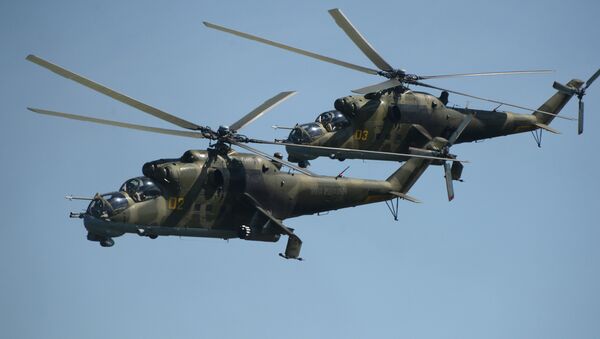Analysts say that such weapons systems will be essential in combat operations against near peer competitors.
"Helicopters are extremely vulnerable against advanced air defense systems," Russian military analyst Dmitry Drozdenko told Sputnik. "This is why speed has become a critical factor. The sooner a helicopter reaches an intended area of operations, carries out an airstrike or collects service personnel, the more chances it has to survive."
In particular, Russia has tested a 'flying laboratory' developed on the basis of the Mil Mi-24 helicopter. The military hardware was outfitted with brand new blades, with their aerodynamics being key for speed," he said.
This advanced Mi-24 derivative, formally known as Mi-PSV, was created under a program known as future high speed helicopter. The rotorcraft made its maiden flight on December 29, 2015, with test pilots praising its steadiness, control performance and dynamic characteristics.
In August 2015, the Mil Moscow Helicopter Plant displayed a prototype of the Russian Advanced Commercial Helicopter (RACHEL) at the MAKS air show. The advanced high-speed rotorcraft is said to be capable of carrying up to 24 passengers or 2.5 tons of cargo, flying at a maximum speed of 500 km/h (310 mph).
In addition, the company has reportedly been working on the Mi-1X project, a new generation of middle-class helicopters capable of accelerating to 520 km/h (312 mph). The helicopter is designed to carry up to 25 passengers and cover a maximum distance of 1,500 kilometers (932 miles).
The Future Vertical Lift program launched in 2004 is meant to offer a replacement for the US Army's UH-60 Black Hawk, AH-64 Apache, CH-47 Chinook, and OH-58 Kiowa helicopters. Two main competitors include the SB>1 Defiant, jointly produced by Sikorsky Aircraft and Boeing, and the Bell V-280 Valor being developed by Bell Helicopter and Lockheed Martin.
Never miss a story again — sign up to our Telegram channel and we'll keep you up to speed!





